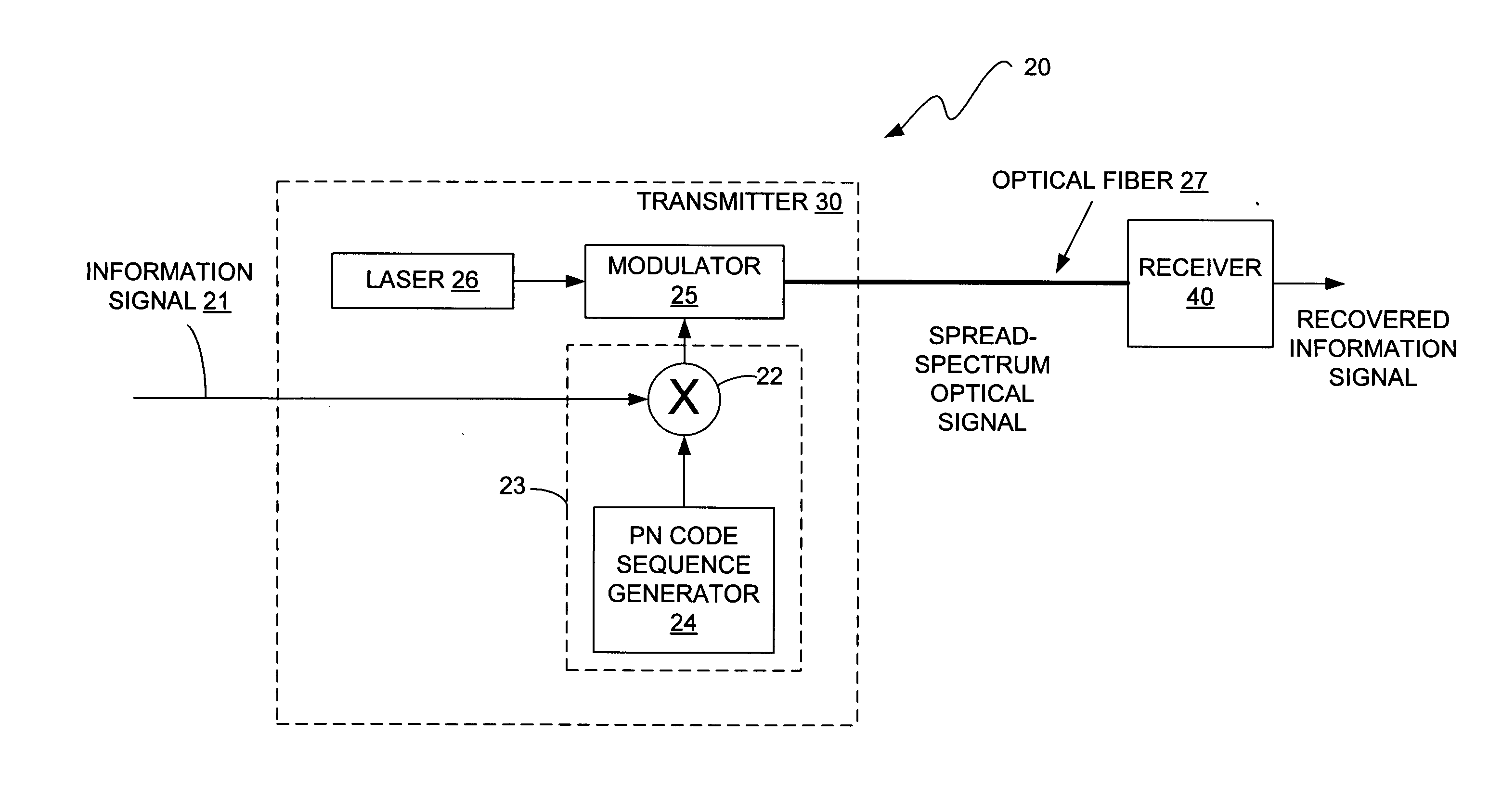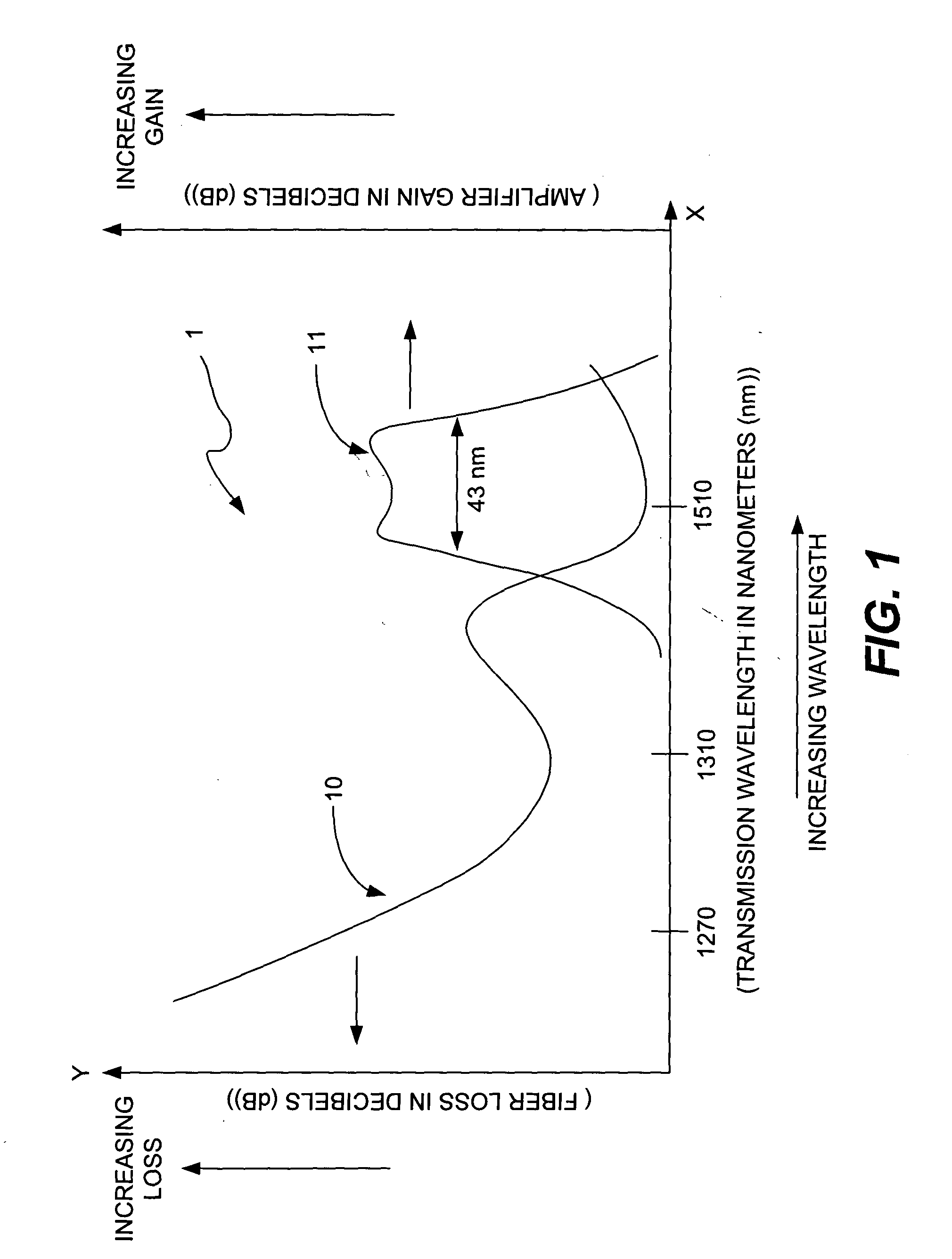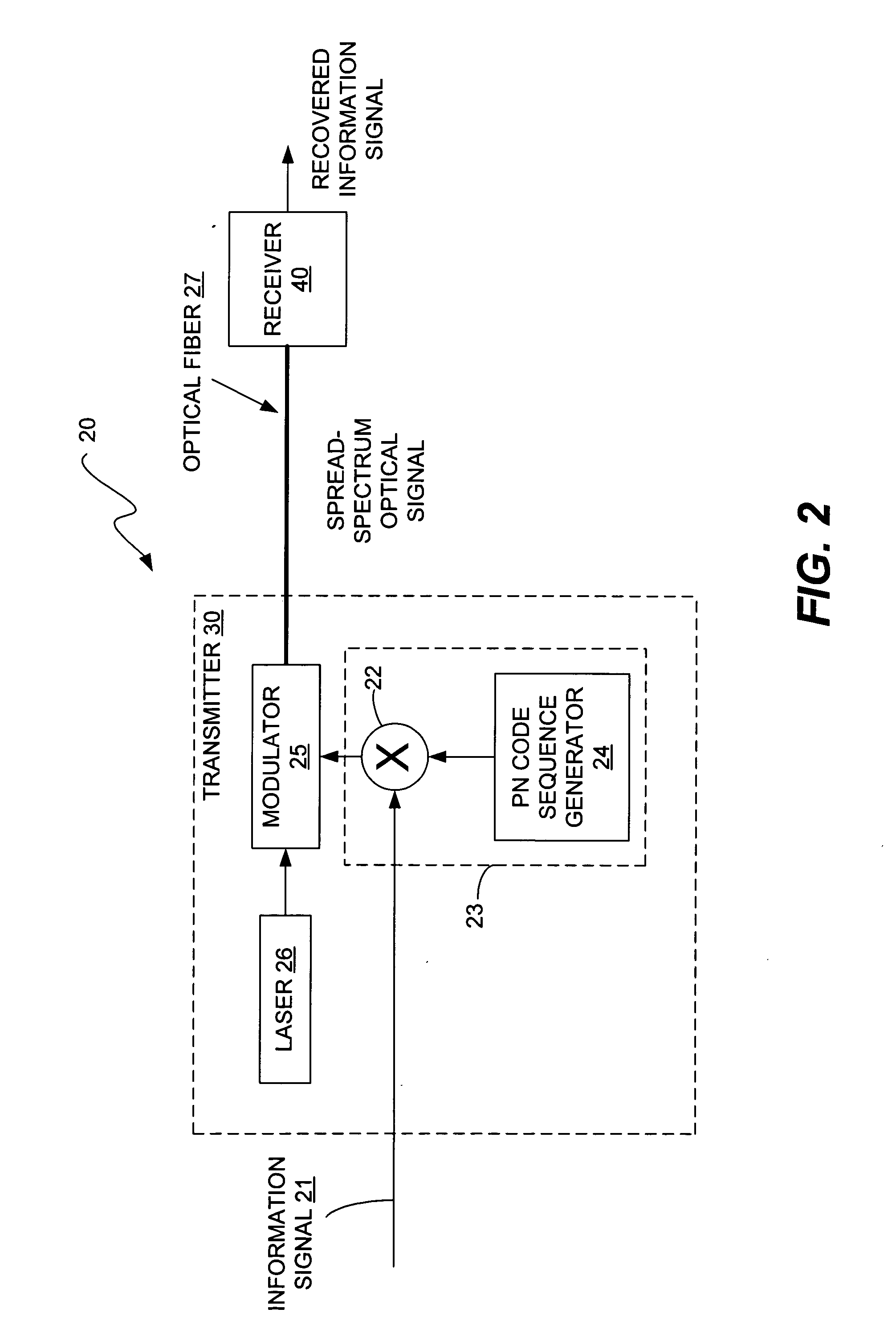Optical communication system and method using spread-spectrum encoding
- Summary
- Abstract
- Description
- Claims
- Application Information
AI Technical Summary
Benefits of technology
Problems solved by technology
Method used
Image
Examples
Embodiment Construction
[0030] The invention uses spread-spectrum encoding in conjunction with wavelength division multiplexing (WDM) to increase the capacity of an optical communication system. As stated above, increasing bit rate in a conventional optical WDM communication system, which requires increasing the pass bandwidths of the channel filters, causes increased inter-channel interference. Such increased inter-channel interference is usually not allowable in conventional optical WDM communication systems. For these reasons, conventional optical WDM communication systems are not able to satisfy demand for greater capacity.
[0031] As stated above, the current 80 channel, 10 Gb / s per channel WDM optical communication system has a capacity that is very near the maximum achievable capacity due to practical limitations imposed by parameters such as laser drift and drift of the center frequency of the demultiplexing filters. The invention provides a way to increase the capacity of an optical WDM communicati...
PUM
 Login to View More
Login to View More Abstract
Description
Claims
Application Information
 Login to View More
Login to View More - R&D
- Intellectual Property
- Life Sciences
- Materials
- Tech Scout
- Unparalleled Data Quality
- Higher Quality Content
- 60% Fewer Hallucinations
Browse by: Latest US Patents, China's latest patents, Technical Efficacy Thesaurus, Application Domain, Technology Topic, Popular Technical Reports.
© 2025 PatSnap. All rights reserved.Legal|Privacy policy|Modern Slavery Act Transparency Statement|Sitemap|About US| Contact US: help@patsnap.com



